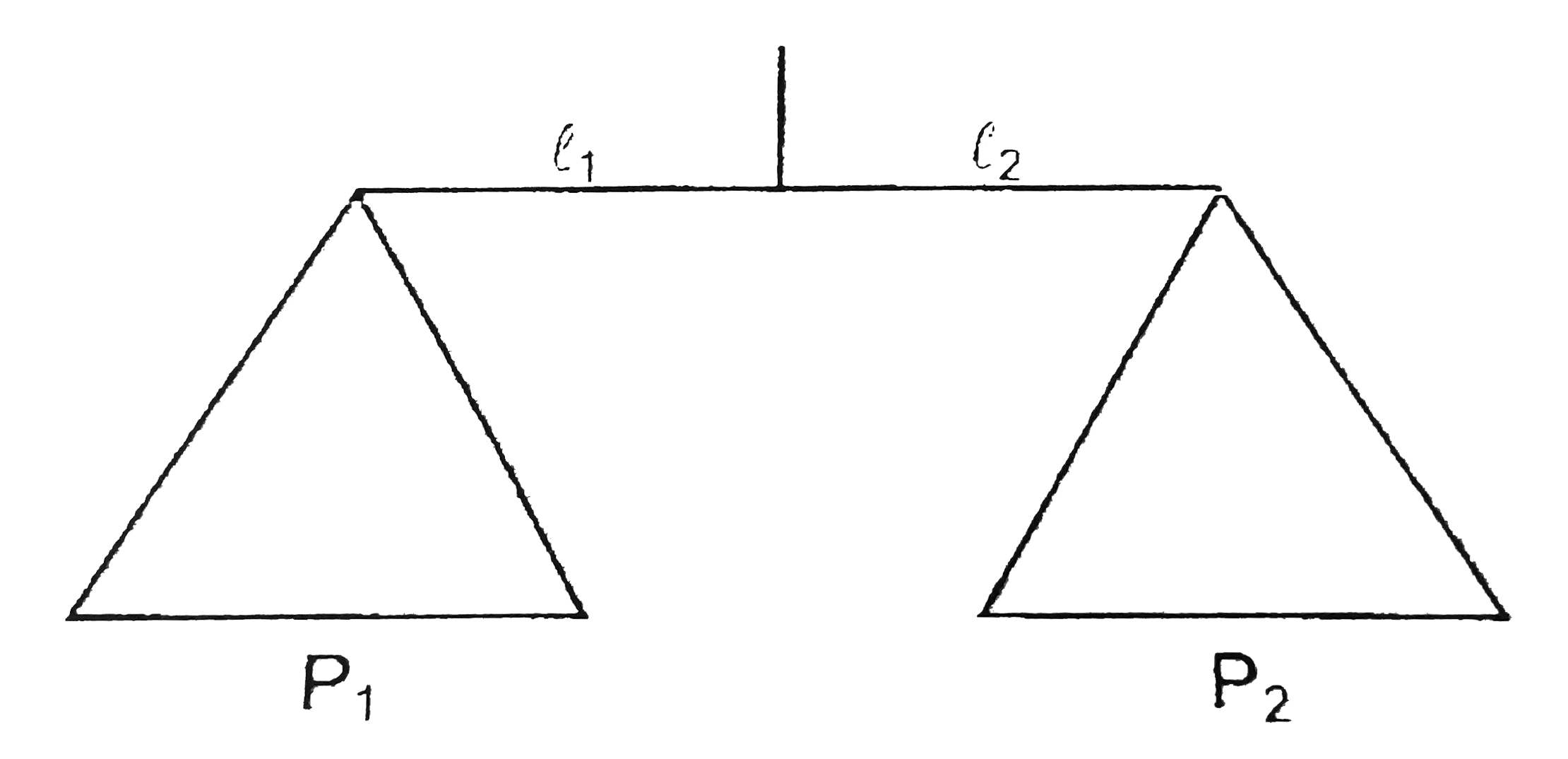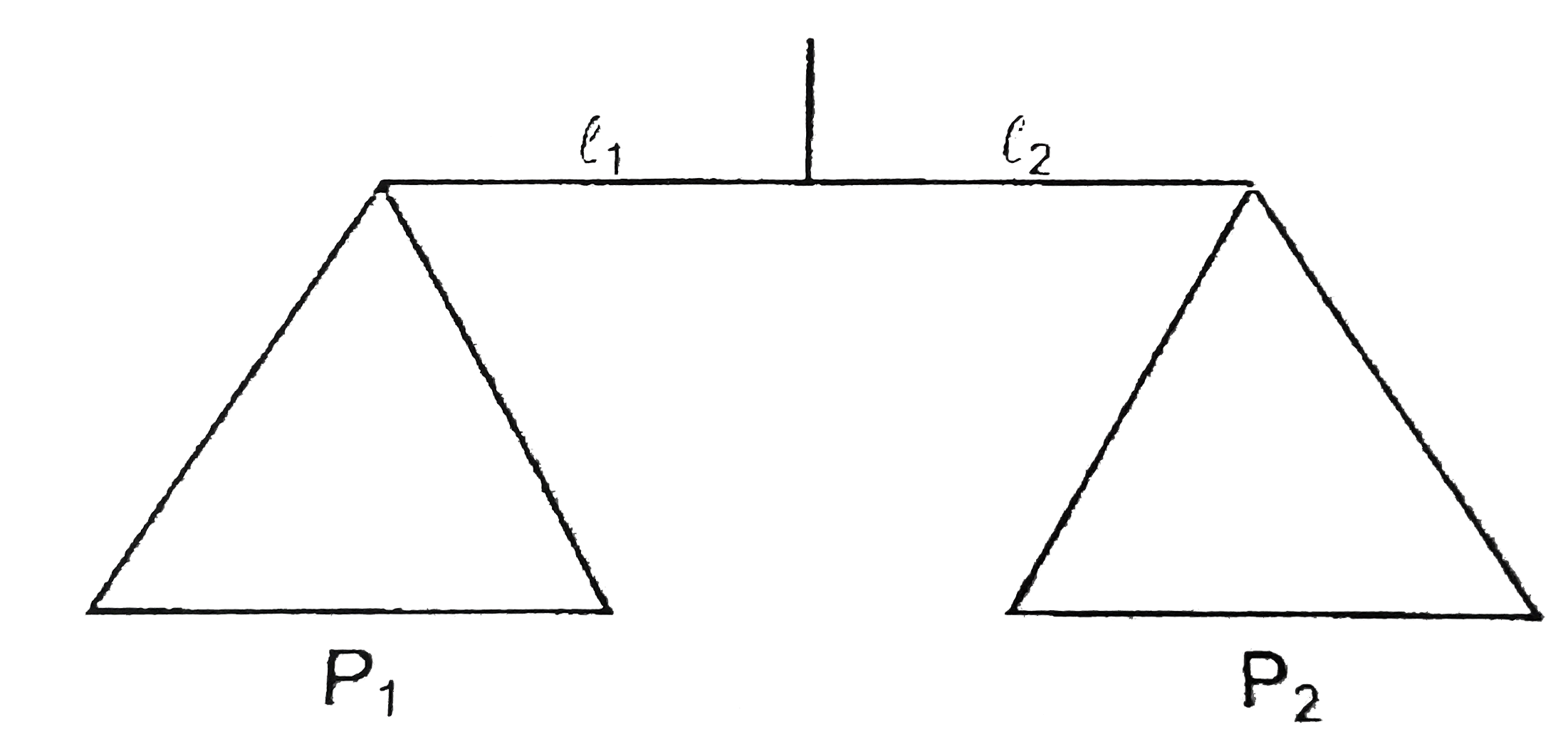
A true balance is one whose pans are of equal masses and arms are of equal lengths. When this happens, the net moment of forces about point of suspension is zero and beam remains horizontal without any weight i.e., for the true balance and also (mass of beam is neglibigle). A shopkeeper uses a false balance to weigh articles. Both arms and pans of this false balance are different, but beam become horizontal without any weight. and but .
Q. Shopkeeper use a weight W to weigh and article by false balance. in two weighing by using alternating pans let and are the weights of the article given to the customer i.e., customer gets weight of article. Loss of gain to the shopkeeper is:
gain
loss
No gain, no loss
Data insufficient
The correct Answer is:B
Since and
since
there will be gain for shopkeeper
be the weight of article when article put in
since
there will be loss for shopkeeper
Since weight loss is more so net loss
Topper's Solved these Questions
- BOOK - RESONANCECHAPTER - TEST PAPERSEXERCISE - PT-0130videos
TEST PAPERS
- BOOK - RESONANCECHAPTER - TEST PAPERSEXERCISE - Pt-0230videos
TEST PAPERS
- BOOK - RESONANCECHAPTER - TEST PAPERSEXERCISE - PART - II PHYSICS107videos
TEST PAPERS
- BOOK - RESONANCECHAPTER - SIMPLE HARMONIC MOTION EXERCISE - Advanced Level Problems13videos
SIMPLE HARMONIC MOTION
- BOOK - RESONANCECHAPTER - TEST SERIESEXERCISE - PHYSICS127videos
TEST SERIES
Similar Questions

A true balance is one whose pans are of equal masses and arms are of equal lengths. When this happens, the net moment of forces about point of suspension is zero and beam remains horizontal without any weight i.e., for the true balance P1=P2 and l1=l2 also P1l1=P2l2 (mass of beam is neglibigle). A shopkeeper uses a false balance to weigh articles. Both arms and pans of this false balance are different, but beam become horizontal without any weight. (P1≠P2 and l1≠l2 but P1l1=P2l2).
Q. Choose the correct options(s)View SolutionA faulty balance with unequal arms has its beam horizontal. Are the weights of the two pans equal ?
View Solution
Knowledge Check
- Question 1 - Select One or More

A true balance is one whose pans are of equal masses and arms are of equal lengths. When this happens, the net moment of forces about point of suspension is zero and beam remains horizontal without any weight i.e., for the true balance P1=P2 and l1=l2 also P1l1=P2l2 (mass of beam is neglibigle). A shopkeeper uses a false balance to weigh articles. Both arms and pans of this false balance are different, but beam become horizontal without any weight. (P1≠P2 and l1≠l2 but P1l1=P2l2).
Q. Choose the correct options(s)AIf mann of pan P2 is less than mass of pan P1 and shopkeeper puts weight W of P_(1), and article on the pan P2 in this weight gain the shopkeeper is W (l2−l1l2)Bif mass of pan P2 is less than mass of pan P1 and shopkeeper puts weight W on P1 and article on the pan P2. In this weight loss to the shopkeeper is W(l2−l1l2)Cif mass of pan P2 is less than mass of pan P1 and shopkeeper puts weight W on P2, and article on the pan P1. In this weight loss to the shopkeeper is W(l2−l1l1)DIf mass of pan P2 is less than mass of pan P1 and shopkeeper puts weight W on P2 and article on the pan P1 in this weight gain the shopkeeper is W(l2−l1l1) - Question 2 - Select One
A body weighs 6gms when placed in one pan and 24gms when placed on the other pan of a false balance. If the beam is horizontal when both the pans are empty, the true weight of the body is :
A13 gmB12 gmC15.5 gmD15 gm - Question 3 - Select One
A false balance has equal arms. An object weigh X when placed in one pan and Y when placed in other pan, then the weight W of the object is equal to
A√XYBX+Y2CX2+Y22D2√X2+Y2
A body weighs 6gms when placed in one pan and 24gms when placed on the other pan of a false balance. If the beam is horizontal when both the pans are empty, the true weight of the body is :
View SolutionWhen a body is weighed successively in the two pans of a physical balance with unequal arms, the apparent masses are found to be M1 and M2. Show that the length of the arms are in the ratio √M1:√M2.
View SolutionThe distance between two points P and Q is d and the lengths of projections of PQ on the coordinate planes are l1,l2,l3 then l1+l22+l23d2
View SolutionThe two arms of a balanced are of unequal length. An object when placed in the left pan of the balance weighs 4 kg. The same object when placed in the right pan of the balance weighs 9 kg. The actual (or) true mass of the object is
View SolutionA false balance has equal arms. An object weights W1 when placed in one pan and W2 when placed in the other pan. The true weight W of the object is.
View Solution

